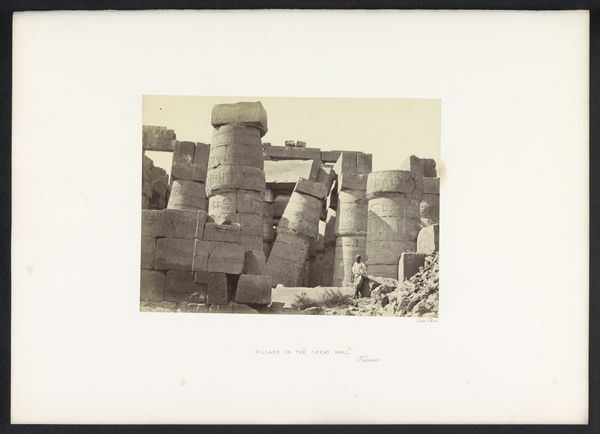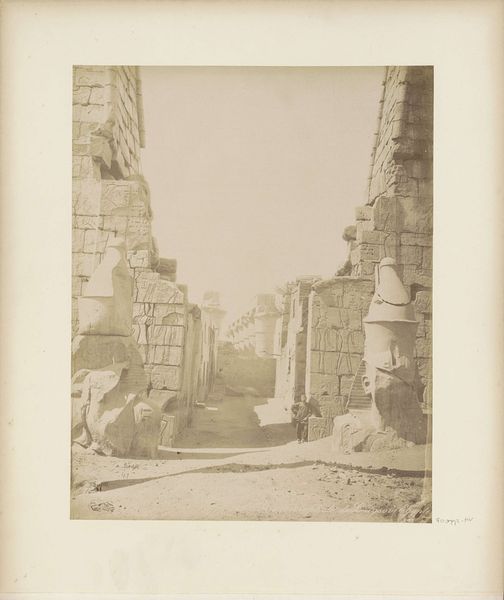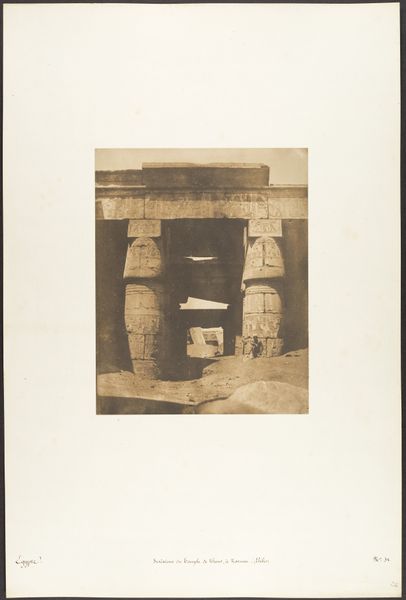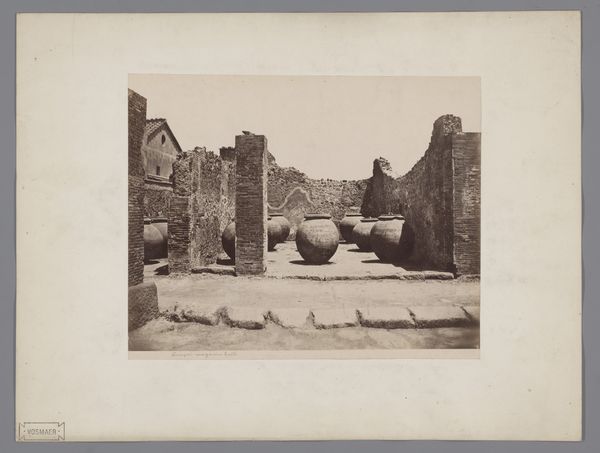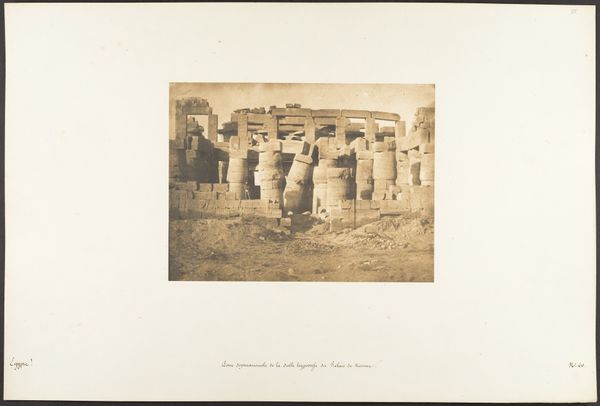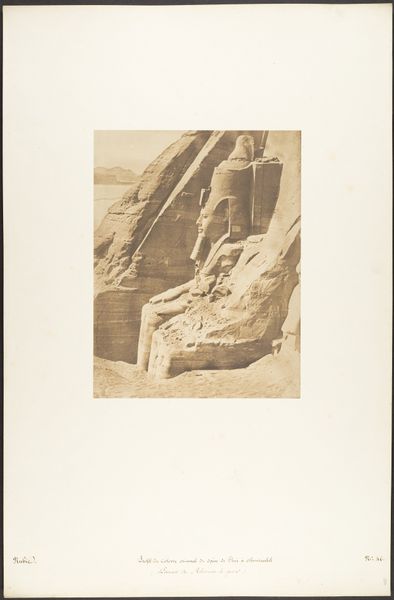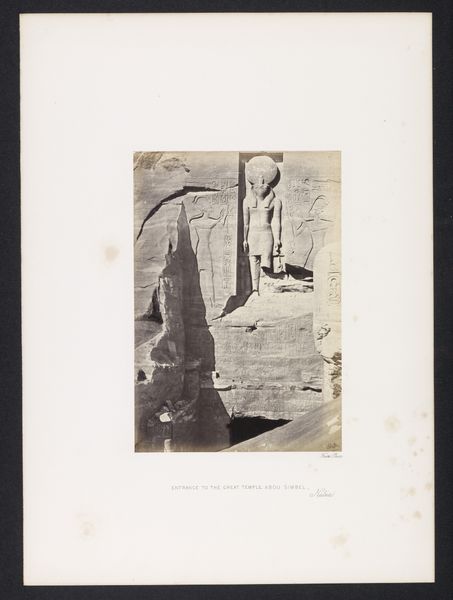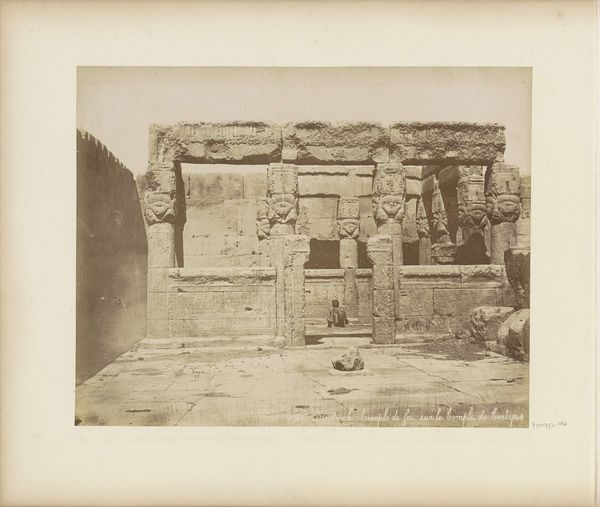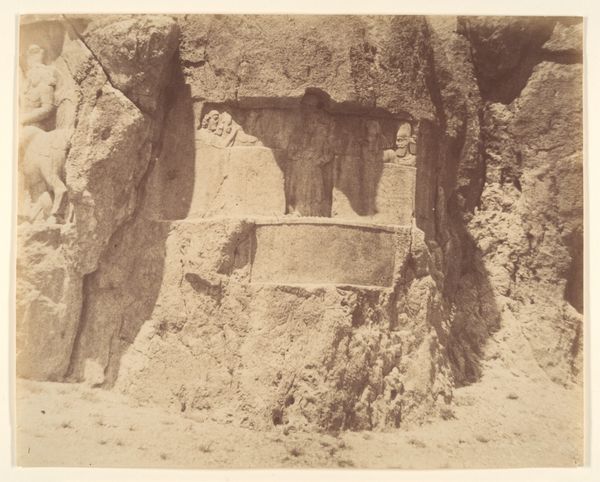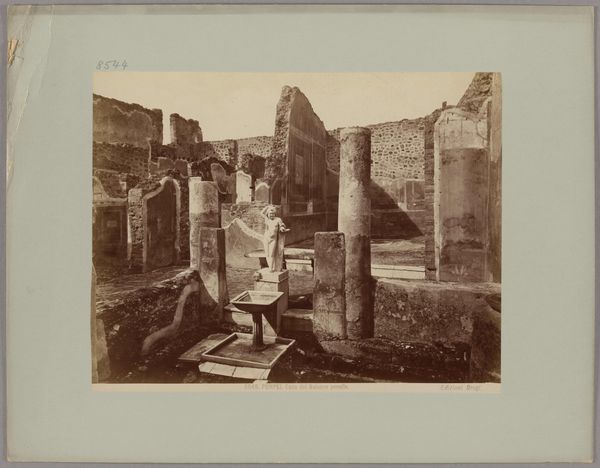
relief, photography, sculpture, gelatin-silver-print
#
relief
#
landscape
#
ancient-egyptian-art
#
photography
#
ancient-mediterranean
#
sculpture
#
gelatin-silver-print
Dimensions: height 164 mm, width 223 mm
Copyright: Rijks Museum: Open Domain
Editor: This gelatin-silver print captures the façade of the temple at Abu Simbel, taken by Francis Frith before 1859. It’s incredible how this early photograph almost flattens the immense scale of the statues, yet you can still sense their imposing presence. What aspects of this piece do you find most compelling? Curator: I'm immediately drawn to the photographic process itself. Frith had to transport heavy equipment across vast distances to document this monument. It’s important to understand the labor involved, not just in the original carving of the temple, but in its 19th-century rediscovery and documentation. What materials and logistical challenges do you think Frith faced? Editor: I imagine just developing the plates in the heat would have been a huge undertaking! And the chemicals… So, you see this image as much about the making of the *photograph* as about the temple itself? Curator: Absolutely. Consider the social context as well. This photograph was created during a period of intense European interest in Egypt. It reflects the colonial gaze and the desire to possess and understand other cultures through documentation. We need to think critically about whose story is being told, and how. Is this photograph truly representing ancient Egyptian power, or is it serving a different agenda entirely? Editor: So the photograph itself becomes a kind of commodity, bringing the image of Abu Simbel back to Europe for consumption. I hadn't thought of it that way. Curator: Precisely! And this photograph, made from specific materials by specific labor, becomes a cultural artifact as telling of the 19th century as of ancient Egypt. What initially appeared to simply represent the ancient world actually reveals layers about its own time period. Editor: This really broadens my understanding. Thanks, it’s made me see beyond the surface of the image itself and think about the bigger picture, the historical and material context in which the photograph was made and consumed.
Comments
No comments
Be the first to comment and join the conversation on the ultimate creative platform.
